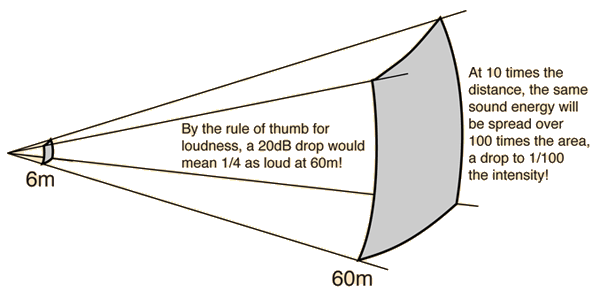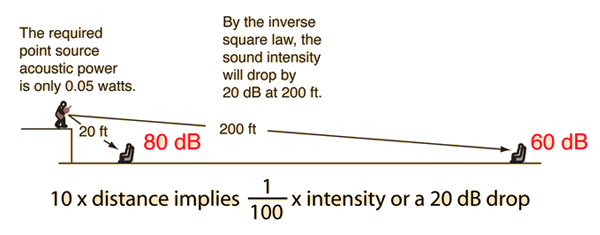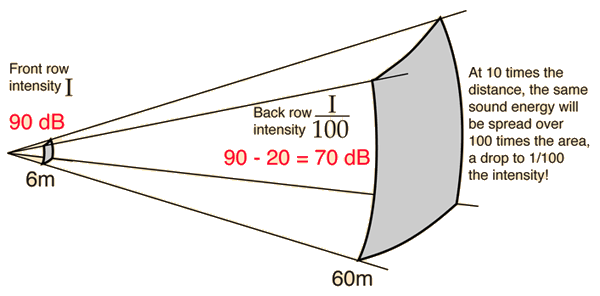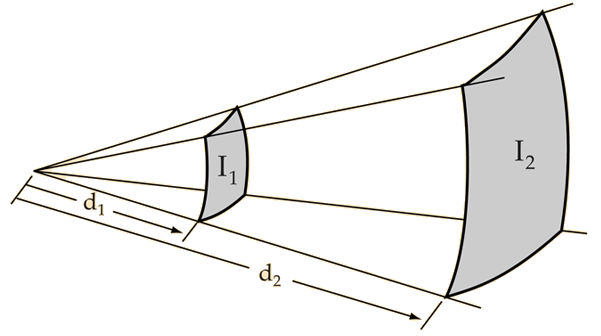The Inverse Square Law Problem
In an open area, sound drops off according to the inverse square law. In an auditorium where the front seats are 6 meters (20 ft) from the sound source and the back seats are 60 m (200 ft) from the sound source, the sound intensity would drop by a factor of 100 ( = 20 decibels ) between the front seats and the back seats if it followed this pattern. This is an unacceptable loss which is prevented partially by reverberation.


For a sound in the midrange of human hearing, one can anticipate that a drop of 20db would be experienced as about one-fourth as loud by the rule of thumb for loudness. But for sounds in the low range of human hearing, like the bottom end of the piano's range, the loss in effective loudness is even more severe because of the progressive loss of low frequencies for the human ear. This produces another problem for auditorium acoustics called the bass-loss problem.
| Example in decibels | Rule of thumb for loudness |
Auditorium acoustics
| HyperPhysics***** Sound | R Nave |

